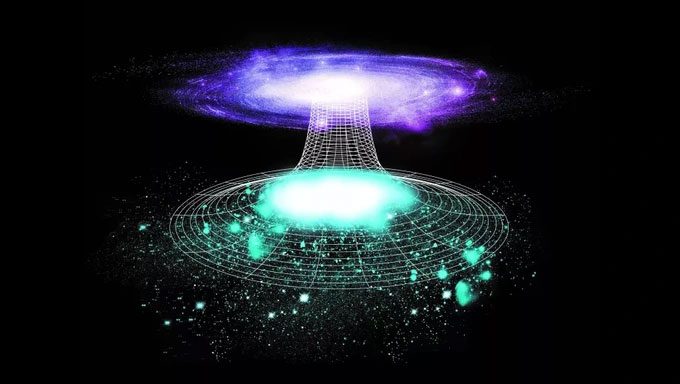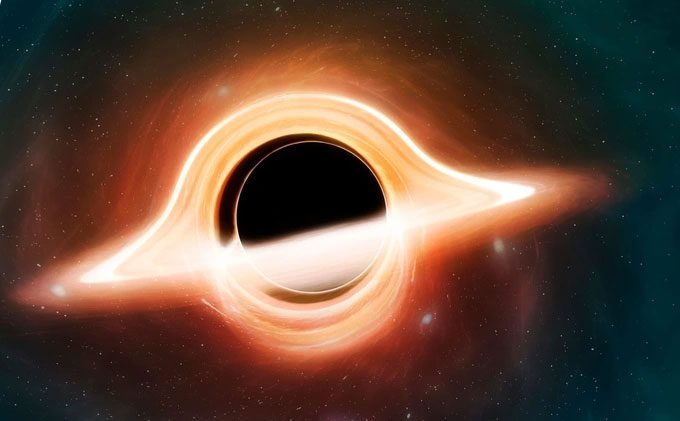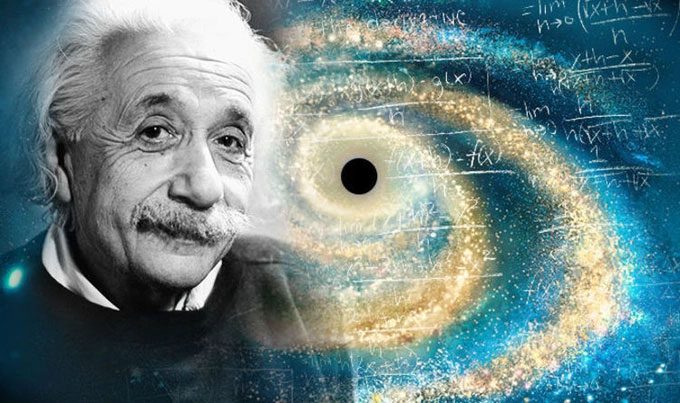We have heard or known about black holes in the universe. However, not everyone is aware of their “twin brother,” the white hole. So, what is a white hole, and do they really exist?
Einstein’s theory of general relativity plays a crucial role in helping us understand the formation process of black holes (also known as “cosmic black holes”) and how black holes interact with their environment. But what about the “twin brother” of the black hole – the white hole? Do they exist and where might they be?

A white hole (or white hole) is a hypothetical region of the universe, functioning in the opposite way to a black hole (Image: Future).
The Twin Brother of Black Holes
In astrophysics, white holes are hypothetical celestial bodies that emit matter, in contrast to black holes, which pull in all matter. They can be considered the time-reversed counterpart of black holes, meaning they resemble a black hole, but only when observed with time moving backward into the past.
To understand the nature of white holes, we first need to consider the factors that lead to the formation of black holes in the universe.
Accordingly, black holes are formed when a massive star “dies,” causing its enormous weight to collapse inward on its core, creating a gravitational force that pulls everything beneath the event horizon.

Black holes are the most terrifying entities in the universe. (Image: University of Arizona).
What remains is a region of completely collapsed matter, where gravitational forces overpower other forces in the universe and compress a mass of matter down to an extremely small point, known as a singularity.
Surrounding this singularity is an event horizon. This is not a solid physical boundary but simply the outline around a singularity. At this point, the gravitational pull is so strong that nothing, not even light, can escape.
White holes are even stranger than black holes. They are theorized to still have singularities at their centers and event horizons at their boundaries, but any matter that enters a white hole is immediately expelled at a speed greater than the speed of light.
Supernatural Theory or Just a Product of Imagination?
Theoretically, white holes could exist based on mathematical principles due to the symmetry of general relativity. But that doesn’t mean they actually exist in the universe.
In other words, we still do not fully understand the formation of white holes, or whether they truly exist. This paradox has existed for decades, and humanity is still unsure.
According to some hypotheses, the only way for white holes to form is through some strange process operating in the early universe, which has nurtured the existence of these entities within the structure of space-time.

White holes may just be the “ghosts” haunting the theory of general relativity (Image: Getty).
The key difference between white holes and black holes is that anything outside will never be able to enter, as it would have to move faster than the speed of light to cross the event horizon.
<pSimilar to their twin brothers, white holes also possess extremely unstable properties, perhaps even more so. Accordingly, white holes would still emit gravitational forces and draw matter towards them.
However, as soon as anything, even a single photon (light particle), approaches a white hole, it will be annihilated. If these particles somehow reach the event horizon, they cannot cross it, but only serve to increase the system’s energy.
At some point, when the energy source of the white hole peaks, it will trigger a complete collapse, thus ending its existence and turning into a black hole.
Therefore, some recent studies have shown that white holes could also be another form of black holes, and the key to unlocking cosmic mysteries may lie within them.
However, those who oppose the theory of white holes argue that they are merely products of imagination. In fact, humanity has never observed any evidence of their existence. Therefore, it would be very difficult to claim that a white hole exists somewhere in the universe.
They suggest that white holes might just be “ghosts” haunting the theory of general relativity.


















































